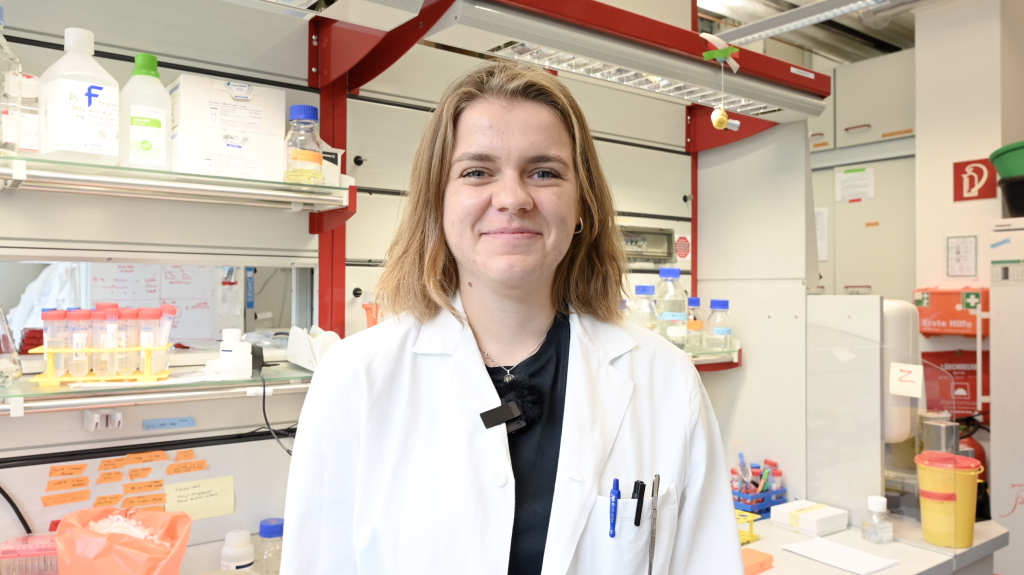30 Percent Relapse Rate in Childhood AML: Researcher Seeks New Weak Points in Blood Cancer
(Vienna, September 2025) Every third child with acute myeloid leukemia suffers a relapse – a problem that Christina Horstmann from St. Anna Children’s Cancer Research Institute (St. Anna CCRI) aims to tackle with an innovative approach: She investigates which zinc finger proteins play a role in the development and progression of the disease. This could pave the way for the development of new drugs or therapeutic strategies.
Acute myeloid leukemia (AML) is one of the most aggressive forms of blood cancer, accounting for about 15–20 percent of all childhood cancer cases. In this disease, myeloid precursor cells – which would normally mature into vital blood cells – can no longer develop properly. Instead, they accumulate in an immature state and disrupt normal blood formation.
Despite major advances in treatment, 30 percent of affected children still suffer a relapse. The main problem: AML is an extremely heterogeneous disease in which numerous genes are mutated, many of which are involved in a wide variety of cellular regulatory processes. This makes the development of targeted therapies extremely difficult – what works for one patient may not work for another.
Zinc Finger Proteins: New Hope Through Targeted Research
This is where Christina Horstmann’s innovative project starts. The researcher is a PhD student in the research group of Florian Grebien, which studies the biology of oncoproteins in pediatric leukemia at St. Anna CCRI. In her project, she focuses on one of the largest protein families: the so-called zinc finger proteins. These play an important role in a variety of cellular processes such as protein degradation, signal transduction, and epigenetic regulation.
Horstmann specifically investigates the zinc finger domains of these proteins – a domain is a small, stably folded structure within a protein. “Although it is already known that zinc finger proteins play a role in AML development, no study has so far focused specifically on the domain level,” explains the researcher.

The Zinc Finger Screen: A Precise Method with Therapeutic Potential
For her research, Christina uses innovative technology that allows her to specifically inactivate individual zinc finger domains by genetically modifying specific genes or gene sequences that encode certain proteins or protein domains. This screening approach makes it possible to identify cells that either gain a growth advantage or are inhibited in their growth due to the inactivation of a particular zinc finger domain.
The survival or death of the cells provides clues as to which proteins or protein domains are essential for the survival and growth of leukemia cells. “Our goal is to identify a zinc finger protein whose domains play a key role in AML development,” says Christina Horstmann. “Once this protein is identified, it could serve as a target for new, more precise therapies.”